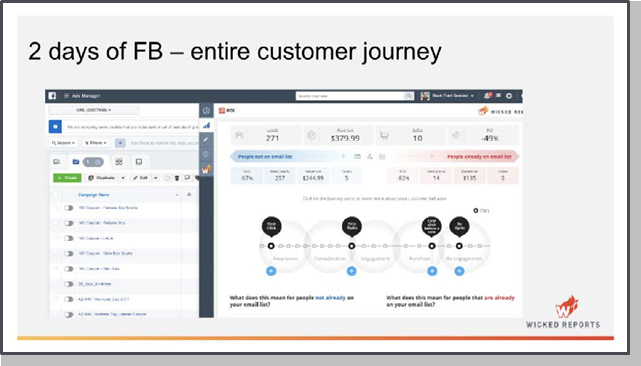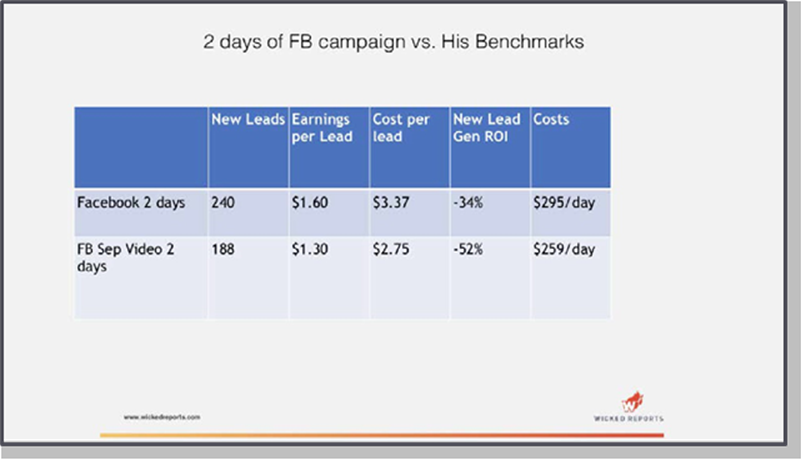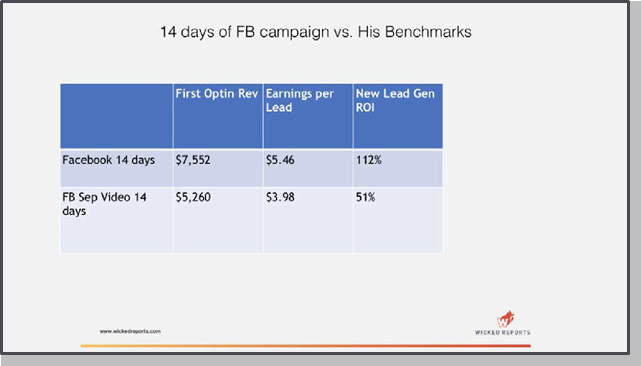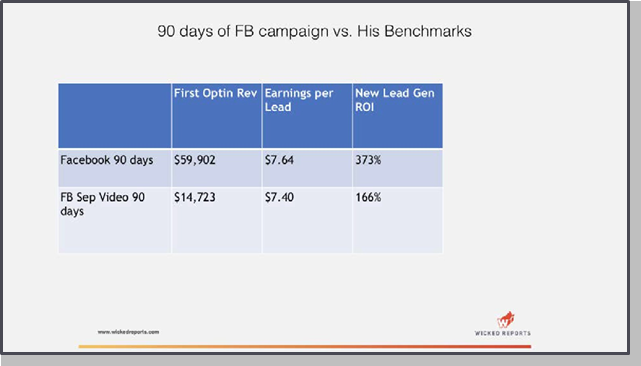Scott Desgrosseillers
Scott has been building databases since he was 11. At 15 he was banned from a Maine fantasy baseball auction for analyzing player statistics and feeding them to his high school coach (who won going away, fyi). Now, he and the Wicked Reports team have been intensely focused on getting online business owners data they can trust.
Existing marketing analytics platforms leave everyone confused and
unsatisfied with their data.
Marketers want data for one reason, to grow faster. The marketer’s mortal enemy is a flood of gathered data that is never acted upon.
What most marketers don’t realize are these three major truths.
New leads take a long time to buy. The average time between the first click and the first order is 43 days out.
New leads act differently than existing leads. Generally, as you get more familiar with someone you act differently than if you’re brand new to them. The same things happen in marketing.
Customer’s have wildly different lifetime values. The top 1% of customers are worth thirty times as much as the lowest 50%. Placing marketing efforts on the bottom 50% has potential to waste time and ad revenue instead of increasing it.
These major truths are the foundation of a data driven marketing strategy. This foundation brings marketers closer to finding the best, highest return of interest customers.
The three keys to leveraging data-driven decisions to maximize marketing ROI are to:
Get the right data. Does the data answer the right questions to grow the
SMB ecommerce?
Trust the data. Are the leads and orders verifiable within the CRM and shopping cart? Does the sales tracking work cross-platform and use real costs?
Act on what the data tells you. Can you take action in a way that measurably increases the ROI and saves money where it used to be wasted?
Using these keys, a seven step data driven marketing strategy can be implemented.
- Intent
- Customer Journey Attribution Point that should be used to determine correct view ot stats
- Start campaign
- Benchmark overall stats for the customer journey point at points in time
- Benchmark Facebook channel stats for the customer journey point at
some point in time
- Measure campaign stats versus benchmark
- Act when stats deviate from benchmark
For Maine Lobster, a business selling lobsters, their initial Facebook advertisement campaign was unsuccessful in increasing sales. The goal of the ads was to get a direct response for purchases and a $4,000 ad budget was used. The ad brought in one sale of $199.
Implementing the data driven foundation and the seven steps above, Facebook advertisements had a 617% return of interest.
The goal of the campaign was changed from converting leads to customers to finding new leads that will purchase. The campaign started with a video and $5,000 ad budget. Benchmarks on Facebook for the entire customer journey and Facebook channel stats were set within the first two days. The benchmarks were the statistics from the previous failed ad.


The same benchmarks were observed fourteen days later.

And again, 90 days later.

After implementing these strategies Maine Lobsters made $1,453,966 off of
$202,740 in Facebook ad spend.
The final step in the data driven strategy, and every marketing strategy, is to reflect on the success of the campaign. Can it be scaled? Should it be killed? Should it chill?
Ads that should chill are campaigns with a positive trend that are making money. In this case, their first advertisement was killed as it didn’t bring in any profits. The second advertisement chilled as it outperformed any past benchmarks.
Data driven advertisements bring in more than profits, they also show key data points that can be used in the future. For example, this funnel can be used to establish new campaigns targeting the same individuals with an expiring offer.
Existing marketing analytics platforms leave businesses confused and unsatisfied with their data. When businesses embrace the three truths of marketing and use them as a foundation to implement the seven step data driven marketing strategy, impactful marketing changes can be made.
